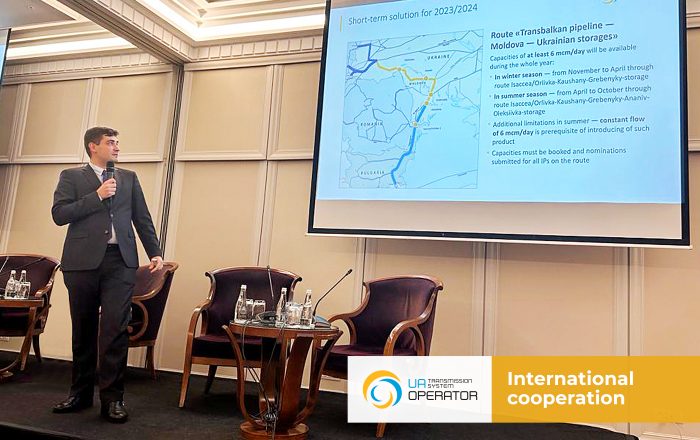On December 7-8th, the 10th SEEGAS Open Stakeholder Meeting took place in Bucharest (Romania). One of the topics discussed was the experience and prospects of the Ukrainian gas transmission system’s use by European traders for the delivery of natural gas for storage in Ukrainian UGSs. Hence, GTSOU’s representatives joined the work within the event’s framework.
GTSOU’s representatives dwelled on a number of commercial and security advantages from which customers can benefit when using Ukraine’s GTS and UGSs, particularly the availability of extensive spare capacities at cross-border interconnection points, competitive prices for gas transportation and storage, as well as an opportunity to create a strategically important infrastructure corridor between Southern and Central Europe. In this context, particular attention was paid to the Trans-Balkan Corridor, which can provide additional capacities for gas injection to Ukrainian UGSs during summer periods.
“2023 showed that customers are interested in Ukraine’s gas infrastructure capacities despite war-related risks. However, active transportation of gas by non-residents for temporary storage in Ukraine only started in July of last year. Hence, capacities of cross-border interconnection points between April and June remained largely unused, which led to huge competition on most of the routes and overpayment for capacities at auctions in the 3rd quarter. Therefore, our message to customers for 2024 is to start transporting gas to Ukraine earlier,” Andriy Prokofiev, head of the GTS Operator’s Division of Cooperation with clients, concluded.
The SEEGAS initiative was established on December 15, 2020. This is a joint project of ten EU countries and other regional stakeholders in the gas sector, whose aim is to create a more organized gas market and improve cross-border trade in the region. The goal of the initiative is to promote closer cooperation between gas exchanges and transport system operators in the region for the development of cross-border natural gas trade in an open, liquid and competitive market.
